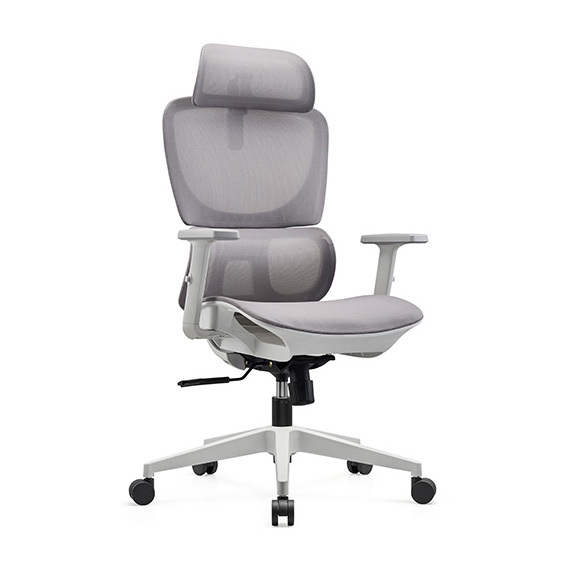The Ergonomic Chair Market is Booming, and Innovation Leads the Future Trends
Nov 08,2023

In recent years, with the significant increase in people's attention to health, especially the deepening understanding of the hazards of sitting for long periods, the ergonomic chair market has witnessed explosive growth. Data shows that the size of the global market for ergonomic chairs reached 10.3 billion in 2024 and is expected to reach 16.4 billion by 2031, demonstrating the enormous potential of the market.
The household scenario has become an important force driving market growth. Ergonomic chairs, which were once mainly used in office places, now account for 47% of consumption in the household sector, up from 32% in 2021. This shift stems from the increase in people's working and entertainment time at home, leading to a higher pursuit of home comfort. To meet the needs of households, manufacturers have developed subdivided functions such as lunch break mode and e-sports mode, greatly enriching the product's usage scenarios. At the same time, intelligence has become a new dimension of market competition. The number of ergonomic chair products equipped with pressure sensors has increased by 220% year-on-year, and some high-end models can even generate sitting posture health reports, helping users better understand their sitting habits and improve their health conditions.
The prosperity of the market has also attracted more brands to join, and the competition has become increasingly fierce. To stand out in the market, enterprises have increased their R & D investment. The R & D expense ratio of leading enterprises has exceeded 5%, achieving remarkable results in technological innovation. New-generation products have achieved zero failures in 120,000 backrest fatigue tests through technological improvements, which is a 300% increase compared to the industry average three years ago. This benefits from the establishment of a digital detection system. The intelligent laboratories built by enterprises can automatically collect 72 parameters, and the detection efficiency has increased by 5 times, effectively ensuring product quality.
However, the industry also faces some challenges during its rapid development. On the one hand, problems such as difficulty in discerning materials and confusion in support parameters have led to chaos in the market. The return rate of the ergonomic chair category on cross-border e-commerce platforms has remained high at 18%-22% in the past three years. On the other hand, there is a significant gap in R & D investment between small and medium-sized manufacturers and leading enterprises. The R & D expense ratio is generally less than 2%. The technological gap has caused a "scissors gap" in the product life cycle. The product iteration cycle of leading brands has been shortened to 8 months, while long-tail manufacturers still rely on technology solutions from three years ago.
To address these issues, the industry is actively exploring solutions. The GB/T 39223.3-2020 national standard participated in by leading enterprises has incorporated biomechanical indicators such as dynamic support efficiency and sitting posture electromyogram activity values into the evaluation system for the first time, establishing a scientific performance evaluation framework for the industry. At the same time, the supply chain management shows a blockchain trend. Leading enterprises have established a raw material traceability system to achieve full-link monitoring from steel batches to product QR codes. The product defect rate has dropped from 1.2% in 2019 to 0.3%, reaching the manufacturing standard of automotive parts.
Overall, driven by strong consumer demand, the ergonomic chair market is moving forward in the direction of technological innovation, quality improvement, and standard normalization. In the future, it is expected to provide consumers with more high-quality, comfortable, and healthy seating options.
Latest News
Say Goodbye to Discomfort: Unleashing the Benefits of Ergonomic Gaming Chairs
The Ultimate Guide to Choosing the Perfect Executive Office Chair




